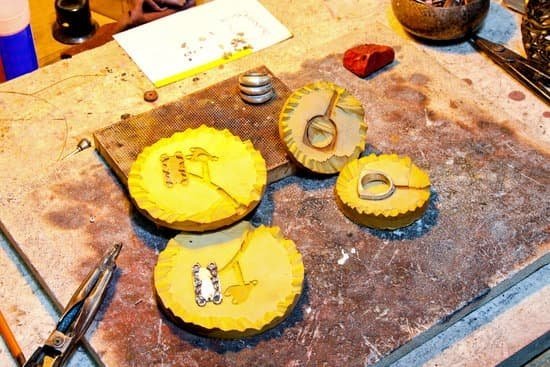Diamonds, known for their beauty and sparkle, have a long history of being cherished as precious gemstones. However, their utility extends far beyond the world of jewelry. From industrial applications to scientific research, diamonds have found their way into numerous sectors, contributing to technological advancements and enhancing various aspects of our everyday lives.
The first section of this article delves into the rich history of diamonds and explores their significance in culture throughout the centuries. Diamonds have been prized by civilizations around the world for their rarity and allure. They have symbolized power, wealth, and love, serving as tokens of status and eternal commitment. By understanding the origins of diamonds and their enduring cultural impact, we can gain a deeper appreciation for these fascinating gems.
Beyond their symbolic value, diamonds have proven themselves indispensable in industrial applications. Their remarkable hardness and thermal conductivity make them ideal materials for precision cutting tools, drilling equipment, and abrasives. In the second section of this article, we will delve into how diamonds are utilized in various industries to enhance productivity and achieve unparalleled precision.
Moreover, diamonds have made significant contributions to scientific research and technological advancements. High-pressure experiments rely on diamonds as anvils to generate extreme conditions that mimic those found within planets or stars. Additionally, researchers employ diamonds in laser technology to manipulate atoms and molecules with extreme precision. These extraordinary applications will be explored in detail in the third section.
Diamonds in Industrial Applications
Diamonds possess remarkable properties that make them highly valuable in industrial applications. Their incredible hardness, thermal conductivity, and resistance to wear and corrosion make them ideal for various industries. Here are some of the key ways diamonds are utilized in industrial settings:
- Precision Cutting Tools: Diamonds are used extensively in precision cutting tools due to their hardness and ability to maintain sharp edges for extended periods. Diamond cutting tools are commonly used in industries such as aerospace, automotive, and machining, where high precision and durability are crucial.
- Drilling Equipment: Diamonds are utilized in drilling equipment for their exceptional strength and resistance to wear. Diamond drill bits are frequently employed in the oil and gas industry for drilling through tough materials like rock formations or concrete.
- Abrasives: Diamonds also play a vital role as abrasives in various industries. Diamond abrasive materials can be applied to grinding wheels, polishing pads, or powders used for finishing and smoothing surfaces. This allows for precise material removal while producing a high-quality finish.
In addition to these applications, diamonds have also found uses in other industrial sectors such as electronics, optics, and even dentistry. For example, diamonds are incorporated into electronic components like transistors and power electronics to enhance efficiency and performance due to their excellent thermal properties.
Furthermore, diamonds have been utilized in optical lenses for their high refractive index and low dispersion properties which allow them to accurately focus light without distortion or color separation. In dentistry, the exceptional hardness of diamonds makes them ideal for dental drills that require lasting sharpness during procedures.
The industrial use of diamonds is just one aspect of their significance beyond jewelry. From precision cutting tools to drilling equipment and abrasives, diamonds contribute significantly to various industries by providing unmatched durability and performance.
Diamonds for Scientific Research and Technological Advancements
Diamonds, with their unique properties, have made significant contributions to scientific research and technological advancements. One notable area where diamonds have been utilized is in high-pressure experiments.
The extreme hardness of diamonds allows them to withstand immense pressure, making them ideal for experiments that require recreating the conditions found deep within the Earth or even on other planets. By subjecting materials to such high pressures using diamonds as anvils, scientists can study how substances behave under extreme conditions and gain insights into various fields like geology and planetary science.
Furthermore, diamonds have also found applications in lasers. Synthetic diamonds can be used as laser crystals due to their excellent thermal conductivity and optical properties. These lasers are used in a wide range of scientific research areas including spectroscopy, microscopy, and medical imaging. Additionally, diamond-based quantum computers have shown promise in solving complex computational problems more efficiently. The unique properties of diamonds allow for the preservation of quantum information over extended periods compared to other technologies.
In addition to these applications, there is ongoing research into using diamonds to create ultra-fast computer processors. Diamonds possess a phenomenon called “negative electron affinity,” which makes them suitable for use as electron emitters. This property could potentially revolutionize electronics by enabling faster and more energy-efficient devices.
Overall, the use of diamonds in scientific research and technological advancements extends far beyond their traditional role in jewelry. From high-pressure experiments to lasers and quantum computing, diamonds continue to contribute significantly to our understanding of the world around us and push the boundaries of technology.
| Applications | Examples |
|---|---|
| High-pressure experiments | Recreating extreme conditions for studying material behavior |
| Laser technology | Utilizing diamonds as laser crystals in spectroscopy and medical imaging |
| Quantum computing | Exploring the potential of diamonds for developing ultra-fast computer processors |
Diamonds in Medical Applications
Diamonds have proven to be invaluable in various medical applications due to their exceptional durability and sharpness. The unique properties of diamonds make them ideal for use in surgical tools, dental drills, and medical imaging devices. In addition, diamonds have also found significant use in cancer treatment, contributing to advancements in radiation therapy and drug delivery systems.
Surgical Tools and Dental Drills
The exceptional hardness of diamonds makes them the perfect material for surgical tools used in delicate procedures. Diamond scalpels and knives are incredibly sharp and durable, allowing surgeons to make precise incisions with minimal tissue damage. This results in faster healing times for patients.
In dentistry, diamond-coated burs are widely used for cutting and shaping teeth during dental procedures. These diamond dental burs provide greater longevity and efficiency compared to traditional metal burs. The high strength of diamonds allows for more accurate and efficient drilling while maintaining patient comfort.
Medical Imaging Devices
Diamond is emerging as a valuable material in medical imaging devices such as X-ray detectors and magnetic resonance imaging (MRI) systems. Diamond-based detectors exhibit excellent thermal conductivity, which enables faster cooling rates during the scanning process. This not only improves patient comfort but also increases the durability and lifespan of the equipment.
Furthermore, diamond’s ability to withstand high radiation doses makes it an ideal choice for radiation oncology applications. Diamond-based sensors can precisely measure radiation doses during cancer treatment, ensuring that the correct dosage is delivered to the tumor while minimizing damage to healthy tissues.
Cancer Treatment
Diamonds have made significant contributions to cancer treatment through their use in radiation therapy and drug delivery systems. In radiation therapy, small diamond particles called nanodiamonds are used as carriers for anti-cancer drugs. The nanodiamonds deliver the drugs directly to the tumor site, enhancing their efficacy while reducing systemic side effects.
Moreover, diamonds are also being investigated as potential materials for radiotherapy delivery. Diamond nanoparticles have shown promise in enhancing the radiation sensitivity of cancer cells, making them more susceptible to treatment. This research holds great potential for improving the effectiveness of radiation therapy and facilitating targeted treatments for various types of cancer.
Diamonds in Electronics and Communication
Diamonds, with their exceptional properties, have found applications beyond just jewelry. In the field of electronics and communication, diamonds are playing a significant role in enhancing the efficiency and capabilities of electronic devices. Here are some ways in which diamonds are utilized in this domain:
Transistors
Diamonds have the potential to revolutionize transistors, which are fundamental building blocks of modern electronic devices. The unique properties of diamonds, such as high thermal conductivity and high breakdown voltage, allow them to operate at higher frequencies and temperatures compared to traditional materials like silicon. This enables the creation of more efficient and faster transistors, leading to enhanced performance in electronic gadgets.
Power Electronics
Diamonds also hold promise for power electronics, which are essential components in renewable energy systems, electric vehicles, and industrial applications. The high thermal conductivity of diamonds allows them to efficiently dissipate heat generated during the operation of power electronics. This results in increased power density and improved reliability of power devices.
Data Storage
Another exciting area where diamonds have shown potential is data storage. Researchers have been exploring the use of diamonds for storing information at the atomic level. Due to their stable crystal lattice structure, diamonds have the ability to retain stored data for an extended period without degradation or loss. If successful, this technology could significantly increase data storage capacity while maintaining long-term stability.
In addition to these applications, scientists and engineers continue to explore new ways to leverage the unique properties of diamonds in electronics and communication fields. As research progresses, we may see even more groundbreaking uses for diamonds in areas such as quantum computing, telecommunications, and sensor technologies.
It is worth noting that while natural diamonds have traditionally been used in these applications, lab-grown diamonds are gaining popularity as an ethical and sustainable alternative. Lab-grown diamonds possess the same physical and chemical characteristics as natural diamonds, making them a viable choice for use in electronic devices. Furthermore, recycled diamonds, extracted from previously owned jewelry or industrial waste, offer another sustainable option for reducing the environmental impact of diamond extraction.
The utilization of diamonds in electronics and communication exemplifies the diverse applications that these precious stones have beyond their ornamental value. With ongoing advancements and innovations, diamonds are proving to be not only a symbol of beauty but also a valuable component in advancing technology and shaping our digital future.
Diamonds in Environmental Applications
Water Purification Systems
One of the lesser-known uses of diamonds is in water purification systems. Diamonds are particularly well-suited for this application due to their high chemical resistance and thermal conductivity. In water treatment, diamonds are used as electrodes in an electrochemical process called diamond electrochemistry.
The surface of a diamond electrode can be modified to create hydroxyl radicals, which are highly reactive species that can effectively remove organic contaminants from water through oxidation. Additionally, diamonds can also be used as catalysts for advanced oxidation processes, helping to eliminate persistent organic pollutants and improve water quality.
Pollution Monitoring
Another area where diamonds have found application is in pollution monitoring. Diamonds can be coated with specific layers of materials that allow them to act as sensors for detecting various pollutants in the environment. For instance, diamond-based sensors have been developed to detect nitrogen dioxide (NO2), a common air pollutant emitted by vehicles and industrial processes.
These sensors offer high sensitivity and selectivity, making them valuable tools for monitoring air quality in urban areas. Moreover, diamonds can also be utilized for sensing heavy metals and toxins in water sources, contributing to the protection of ecosystems and public health.
Renewable Energy Technologies
Diamonds play a significant role in advancing renewable energy technologies. In solar panels, diamond-coated surfaces can enhance their efficiency by reducing reflection and increasing light absorption. This results in higher electricity generation from sunlight.
Moreover, diamonds are being explored for their potential use as substrates or electrodes in fuel cells, which convert chemical energy into electrical energy without combustion. The exceptional thermal conductivity of diamonds allows for efficient heat dissipation within fuel cells, improving their overall performance and lifespan. By incorporating diamonds into renewable energy technologies, we can enhance energy production efficiency while reducing our reliance on fossil fuels.
Overall, diamonds have proven themselves to be valuable assets when it comes to environmental applications. From water purification systems to pollution monitoring and renewable energy technologies, diamonds demonstrate their versatility and usefulness beyond their glamorous image in the world of jewelry. As we continue to seek innovative solutions for environmental challenges, diamonds are likely to play an increasingly important role in safeguarding our planet and its resources.
Beyond Earth
The exploration of space has been a frontier that humanity has long sought to conquer, and diamonds have found their way into this extraterrestrial realm. In the field of space exploration, diamonds serve various purposes due to their unique properties and characteristics.
One important application of diamonds in space exploration is their use in cutting-edge spacecraft windows. Diamonds have exceptional hardness and thermal conductivity, making them ideal for withstanding the harsh conditions of outer space. By using diamond windows, spacecraft are equipped with durable protection against micrometeoroids and extreme temperatures while allowing for clear visibility.
Another use of diamonds in space exploration is as heat sinks for satellite systems. The electronic components of satellites generate significant amounts of heat, which can lead to performance issues if not properly managed. Diamonds, with their excellent thermal conductivity, can efficiently dissipate heat away from sensitive systems, ensuring that satellites function optimally even in the demanding environment of space.
Furthermore, the potential for utilizing diamonds in mining resources on other planets or asteroids has been explored. Scientists have proposed the concept of using diamond-tipped drills or abrasives to extract valuable materials from celestial bodies such as the moon or Mars. This innovative approach could revolutionize resource acquisition in space and enable further human presence beyond Earth.
In summary, diamonds play a crucial role in space exploration by providing protection through spacecraft windows, effectively managing heat as a heat sink in satellite systems, and offering potential solutions for resource extraction on other planets or asteroids. Their exceptional properties make them invaluable assets for pushing the boundaries of human knowledge and expanding our presence beyond Earth.
| Application | Description |
|---|---|
| Spacecraft Windows | Diamonds’ hardness and thermal conductivity make them ideal for protecting spacecraft against micrometeoroids and extreme temperatures while providing clear visibility. |
| Heat Sinks | Diamonds’ excellent thermal conductivity allows them to efficiently dissipate heat from satellite systems, ensuring optimal performance in space. |
| Resource Extraction | Diamond-tipped drills or abrasives could be used to extract valuable materials from other celestial bodies, revolutionizing resource acquisition in space. |
Ethical and Sustainable Diamond Alternatives
In conclusion, while diamonds are most commonly associated with jewelry, their uses extend far beyond the realm of personal adornment. Throughout history, diamonds have held significant cultural value as symbols of power, wealth, and love. However, they have also found a place in various industries and scientific advancements.
Diamonds’ exceptional hardness and thermal conductivity make them ideal for industrial purposes. They are widely used in precision cutting tools, drilling equipment, and abrasives due to their durability and ability to withstand extreme conditions. Moreover, diamonds have made significant contributions to scientific research and technological advancements. They have been utilized in high-pressure experiments and lasers, paving the way for innovations such as quantum computing and ultra-fast computer processors.
In addition to their industrial and scientific applications, diamonds play a crucial role in medical fields. Their exceptional durability and sharpness make them useful in surgical tools, dental drills, and medical imaging devices. Furthermore, diamonds are being explored for cancer treatment through radiation therapy and drug delivery systems. Their unique properties offer potential benefits in improving patient outcomes.
Diamonds also have a place in electronics and communication technologies. The efficiency of electronic devices can be enhanced by incorporating diamonds into transistors and power electronics. Additionally, research is underway to explore the use of diamonds in data storage at the atomic level.
Furthermore, diamonds contribute to environmental protection efforts through water purification systems and pollution monitoring. They also play a part in renewable energy technologies such as solar panels and fuel cells.
Looking beyond Earth, diamonds have become valuable assets in space exploration missions. They are used for constructing spacecraft windows and as heat sinks for satellite systems due to their remarkable properties.
However, it is essential to address concerns surrounding the diamond industry’s ethics and sustainability. Exploitation of workers and damage to the environment raise ethical issues that need attention. As a response to these concerns, ethical alternatives such as lab-grown diamonds or recycled diamonds are gaining popularity in the market.
Frequently Asked Questions
How are diamonds used besides jewelry?
Diamonds have several uses beyond just jewelry. One common application is in cutting tools and industrial materials. Due to their exceptional hardness, diamonds are used as abrasive agents in cutting, grinding, and polishing tasks in industries like construction, mining, and manufacturing.
These diamond-coated tools can efficiently work on hard materials like glass, concrete, or metal, enabling precise cuts and finishes. Additionally, diamonds also find utility in various scientific fields such as optics and electronics due to their unique properties like high thermal conductivity and optical transparency.
What other things are diamonds used for?
Apart from jewelry and industrial applications, diamonds have found use in the field of technology. Diamonds possess remarkable electrical properties which make them ideal for high-performance electronic devices.
For instance, synthetic diamond wafers are used in semiconductors for their ability to handle high power loads without overheating. Furthermore, due to their exceptional durability, diamonds are employed as protective coatings for optical lenses or windows in lasers or other high-energy applications where resistance against extreme conditions is crucial.
Is there an alternative to diamonds can something else be used in its place?
While diamonds are highly valued for their beauty and unique physical properties, there are alternatives that can be used as substitutes in specific applications. For example, cubic zirconia is a popular synthetic alternative to natural diamonds in jewelry. Although it has a similar appearance to a diamond at first glance, cubic zirconia is much more affordable due to its lower value as a gemstone substitute.
In industrial applications requiring hardness and durability similar to diamonds but without the expensive price tag of natural stones, engineering ceramics like tungsten carbide or alumina can serve as viable alternatives or composites mixed with small diamond particles can offer comparable performance. However, it’s important to note that while alternatives exist in certain domains, each has its own advantages and limitations compared to the unique qualities of natural diamonds.

Welcome to my jewelry blog! My name is Sarah and I am the owner of this blog.
I love making jewelry and sharing my creations with others.
So whether you’re someone who loves wearing jewelry yourself or simply enjoys learning about it, be sure to check out my blog for insightful posts on everything related to this exciting topic!





